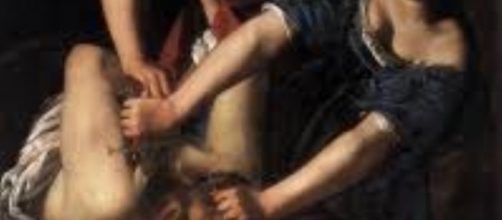Vogue magazine’s Oct. 31 edition reported an unusual event on Christian Dior’s runway for Spring 2018: a model sported a T-shirt emblazoned with the words, “Why Have There Been No Great Women Artists?” The question first appeared in an Art News magazine essay in 1971 by art historian Linda Nochlin who died this week at age 87. I never liked her question because it seemed to accept the premise that there haven’t been any exceptional female artists. But that’s not what she meant. (More about her intent in a moment).
Who’s to blame?
My answer to Nochlin’s question points to historians – male by tradition – who routinely overlooked female painters.
I’m thinking of scholars like Karl Scheffler who wrote about women in art in the last century this way: “In an Amazonian state, there would be neither culture, history nor art.”
Nochlin had a different take, faulting women, not men – feminist in particular. As she saw it, the women’s lib movement is “chiefly emotional – personal, psychological and subjective – centered.” The better way to combat sexism, she said, is what she called “historical analysis.” Not catchy, but crucial. Correcting the record is the way to course correction.
Demonstration lesson
Nochlin did this with an exhibit in 1977 at the L.A. County Art Museum and Brooklyn Museum titled “Women Artists: 1550-1950.” Her effort made for an eye-opening display of paintings by Elisabeth Vigee-Lebrun, Rosa Bonheur, Berth Morisot and Artemesia Gentileschi.
One look at their work left you wondering how they could have been ignored. History, not histrionics, made Nochlin’s case. But if you also look at the lives of these artists, you see the extent of the chauvinism they endured.
Consider Rosa Bonheur in the 19th century, who specialized in painting animals – horses, deer, cattle – and frequented slaughterhouses to study their anatomy. But when she tried to don trousers at these meat processing plants, she was told to ask for permission from the police department. And her license to wear pants had to be re-authorized every six months.
Truth test
Then there’s Artemesia Gentileschi in the 17th century whose dramatic figure painting brought Old Testament stories to life.
In her private life, she sued her art teacher for rape. And in order to testify in court, she was made to pass a torture test with thumb screws. Even at that, the teacher was jailed for only eight months. Nochlin’s “historical analysis” serves to raise awareness about sexism like this.
Moral of the story
Not everyone, however, gets the message. How else to explain a 1997 film about Gentileschi’s life called, “Artemesia,” which painted her as infatuated with her art teacher and the sex act as consensual. The filmmaker - a woman, no less - either didn’t do her homework or simply opted for a sappy Hollywood romance, as if Gentileschi’s real-life story wasn’t dramatic enough. Good for the Christian Dior team for paying homage to Nochlin. It’s time for feminists to get off their soapbox and for art historians to hit some history books.


